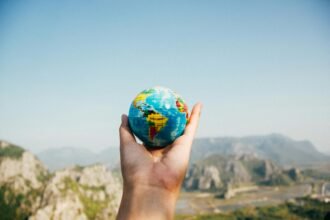Outline
- Introduction
- The significance of World Wetlands Day
- Brief History of World Wetlands Day
- Understanding Wetlands
- Definition of wetlands
- Types of wetlands
- Coastal wetlands
- Inland wetlands
- Importance of Wetlands
- Biodiversity hotspots
- Natural water filtration
- Flood control
- Carbon sequestration
- World Wetlands Day 2025 Theme
- Announced theme for 2025
- Significance of the theme
- Events and Activities
- Global events
- Local initiatives
- Virtual activities
- Educational Initiatives
- School programs
- Community workshops
- Online resources
- Wetland Conservation Efforts
- International agreements
- Ramsar Convention
- National policies
- NGO involvement
- International agreements
- Success Stories
- Restored wetlands
- Community-driven projects
- Challenges in Wetland Conservation
- Climate change impact
- Pollution and waste management
- Urbanization pressures
- Innovative Solutions
- Sustainable management practices
- Technological advancements
- Community engagement
- How to Get Involved
- Volunteer opportunities
- Advocacy and awareness campaigns
- Personal actions to protect wetlands
- The Future of Wetlands
- Predictions for 2050
- Role of technology in wetland conservation
- Conclusion
- Recap of the importance of wetlands
- Call to action for World Wetlands Day 2025
- FAQs
- What is World Wetlands Day?
- How can I participate in World Wetlands Day 2025?
- Why are wetlands important?
- What are some threats to wetlands?
- How can technology help in wetland conservation?
World Wetlands Day 2025

Introduction
Have you ever wondered why World Wetlands Day 2025 are often called the kidneys of the Earth? These incredible ecosystems play a vital role in maintaining the health of our planet. World Wetlands Day, celebrated annually on February 2nd, aims to raise global awareness about the importance of wetlands and their conservation. As we gear up for World Wetlands Day 2025, let’s dive into the history, significance, and exciting plans for this year’s celebration.
Understanding Wetlands
Definition of Wetlands
Wetlands are areas where water covers the soil or is present near the surface for varying periods during the year. This water saturation can create unique ecosystems rich in biodiversity.
Types of Wetlands
Wetlands come in various forms, each with its unique characteristics and species.
Coastal Wetlands
These include salt marshes, mangroves, and estuaries found along the coastlines. They provide crucial habitats for marine life and protect shorelines from erosion.
Inland Wetlands
Inland wetlands encompass swamps, marshes, and bogs found in non-coastal areas. They are essential for maintaining freshwater ecosystems and supporting diverse wildlife.
Importance of Wetlands
Biodiversity Hotspots
Wetlands are home to a wide array of plant and animal species, many of which are not found anywhere else. They serve as breeding grounds, nurseries, and refuges for numerous organisms.
Natural Water Filtration
Wetlands act as natural water filters, trapping pollutants and sediments. This filtration process helps maintain the quality of both surface and groundwater.
Flood Control
By absorbing and storing excess rainfall, wetlands mitigate the impact of floods. They act like sponges, reducing the risk of flooding in nearby areas.
Carbon Sequestration
Wetlands are significant carbon sinks. They store large amounts of carbon dioxide, helping to regulate the Earth’s climate.
World Wetlands Day 2025 Theme
Each year, World Wetlands Day adopts a specific theme to highlight different aspects of wetland conservation.
Announced Theme for 2025
The theme for World Wetlands Day 2025 is “Wetlands and Water: A Source of Life.” This theme underscores the crucial relationship between wetlands and water resources.
Significance of the Theme
Focusing on the connection between wetlands and water emphasizes the role of these ecosystems in sustaining life on Earth. It highlights the need for integrated water and wetland management to ensure the health of our planet.
Events and Activities
World Wetlands Day 2025 promises a plethora of events and activities to engage people of all ages and backgrounds.
Global Events
From international conferences to large-scale clean-up drives, global events aim to bring together experts, policymakers, and communities to discuss and take action on wetland conservation.
Local Initiatives
Local communities will host educational workshops, nature walks, and restoration projects to promote wetland awareness and involvement.
Virtual Activities
With the rise of digital engagement, virtual activities such as webinars, online campaigns, and virtual tours of wetlands will allow people to participate from anywhere in the world.
Educational Initiatives
Education plays a pivotal role in wetland conservation. Various programs aim to educate and engage people about the importance of wetlands.
School Programs
Schools will incorporate wetland conservation into their curricula, with activities like field trips, science projects, and interactive lessons.
Community Workshops
Workshops for community members will provide hands-on learning experiences, teaching practical skills for wetland restoration and protection.
Online Resources
A wealth of online resources, including articles, videos, and interactive maps, will be available to educate the public about wetlands and their conservation.
Wetland Conservation Efforts
Efforts to conserve wetlands are multifaceted, involving international agreements, national policies, and NGO initiatives.
International Agreements
Ramsar Convention
The Ramsar Convention on Wetlands, signed in 1971, is an international treaty aimed at the conservation and sustainable use of wetlands. It provides a framework for national action and international cooperation.
National Policies
Many countries have enacted policies to protect and manage their wetland resources, often integrating them into broader environmental and water management strategies.
NGO Involvement
Non-governmental organizations (NGOs) play a crucial role in wetland conservation. They conduct research, raise awareness, and implement conservation projects worldwide.
Success Stories
Despite challenges, there have been numerous success stories in wetland conservation.
Restored Wetlands
Restoration projects have successfully rehabilitated degraded wetlands, bringing back their ecological functions and biodiversity.
Community-Driven Projects
Community involvement has led to the successful conservation of local wetlands, demonstrating the power of grassroots efforts.
Challenges in Wetland Conservation
Wetland conservation faces several challenges that require coordinated efforts to overcome.
Climate Change Impact
Climate change poses a significant threat to wetlands through rising sea levels, altered precipitation patterns, and increased temperatures.
Pollution and Waste Management
Pollution from industrial, agricultural, and residential sources can degrade wetland ecosystems, affecting water quality and biodiversity.
Urbanization Pressures
Urban development often leads to the drainage and destruction of wetlands, reducing their area and ecological integrity.
Innovative Solutions
Innovative approaches are essential to address the challenges facing wetlands.
Sustainable Management Practices
Adopting sustainable practices, such as integrated water management and conservation agriculture, can help protect wetlands.
Technological Advancements
Technologies like remote sensing and GIS mapping are enhancing our ability to monitor and manage wetlands effectively.
Community Engagement
Engaging local communities in conservation efforts ensures that wetland management practices are sustainable and culturally appropriate.
How to Get Involved
Everyone can play a part in wetland conservation. Here are some ways to get involved.
Volunteer Opportunities
Join local wetland clean-up events, restoration projects, or citizen science initiatives to contribute to wetland conservation.
Advocacy and Awareness Campaigns
Participate in or organize campaigns to raise awareness about the importance of wetlands and advocate for their protection.
Personal Actions to Protect Wetlands
Simple actions like reducing water usage, avoiding pollution, and supporting sustainable products can help protect wetlands.
The Future of Wetlands
Looking ahead, the future of wetlands depends on our actions today.
Predictions for 2050
By 2050, with concerted efforts, we can expect healthier wetlands that continue to provide essential ecosystem services.
Role of Technology in Wetland Conservation
Emerging technologies will play a critical role in monitoring, managing, and restoring wetlands, ensuring their preservation for future generations.
Conclusion
Wetlands are invaluable ecosystems that sustain biodiversity, improve water quality, control floods, and combat climate change. As we celebrate World Wetlands Day 2025, let’s recognize the importance of these ecosystems and commit to their conservation. Join the global movement to protect our wetlands and ensure a sustainable future for all.
FAQs
What is World Wetlands Day?
World Wetlands Day, observed on February 2nd, aims to raise awareness about the importance of wetlands and promote their conservation.
How can I participate in World Wetlands Day 2025?
You can participate by attending local events, joining virtual activities, volunteering in wetland projects, and spreading awareness through social media.







